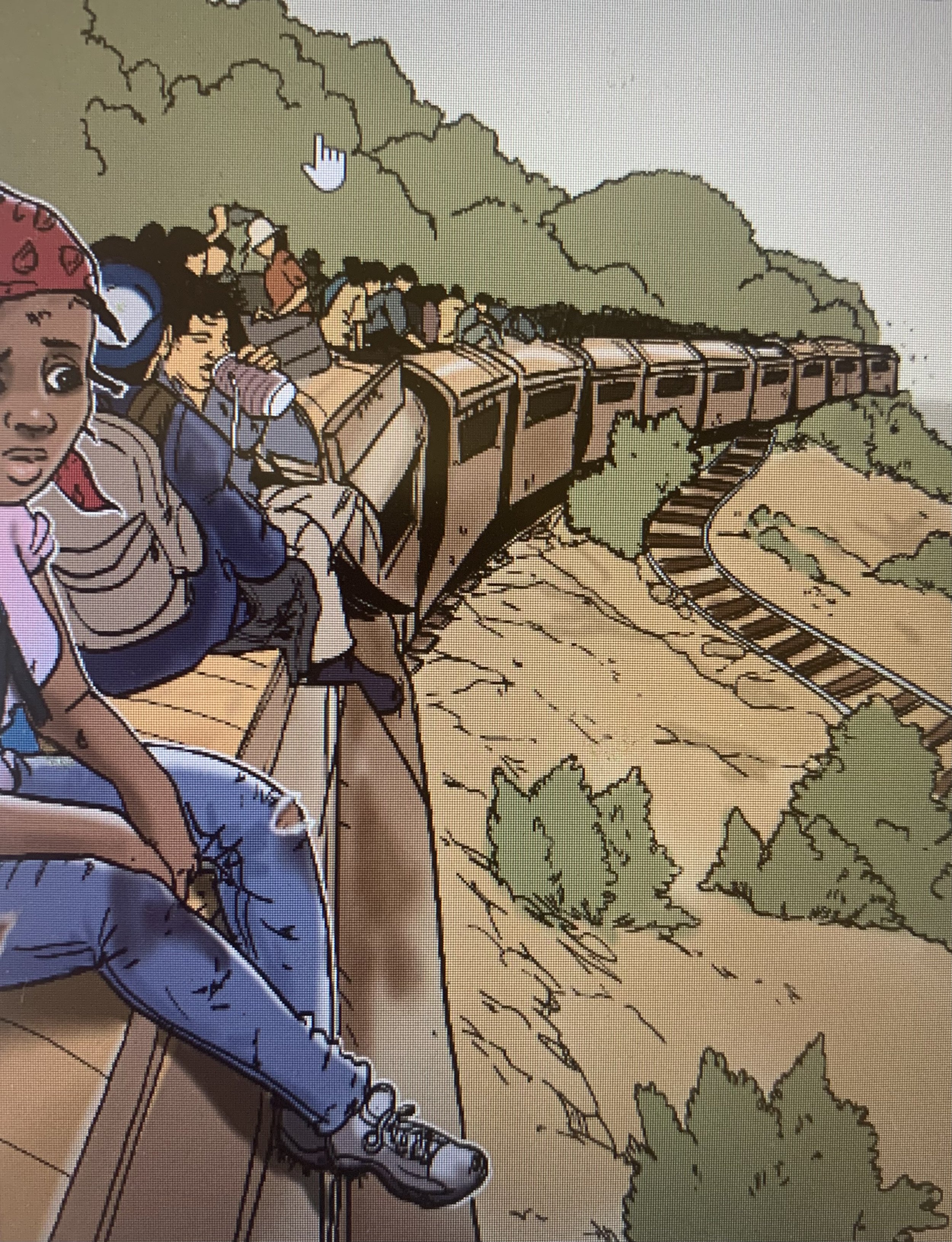Identity quest of a teenage girl
After running away from an abusive situation at home, 15 year old Ashley risks hopping freight trains. She heads north out of Chili with the US her ultimate destination.
According to the German-born psychologist Erik Erikson (b. 1902 - d. 1994), adolescents are supposed to explore questions of self–identity in a safe setting so as to develop healthily. Their parents should provide support as they seek to understand who they are and how they fit within their home and social environments. For Maria, a teenage girl born in Honduras living in Chile with her parents, this phase was confusing and damaging mostly due to having been physically abused by her stepfather. Since her home was clearly no longer a comfortable or nurturing place, she felt she had no alternative but to leave her parents behind for a country where she might safely study, work, and pursue her dreams.
How though should Maria find the means to pay for transportation, food, and lodging? Where should she go? Which country? She gathered information from her friends and acquaintances without letting her abusive stepfather know of her plans. Many mentioned the United States as a country where people worldwide go to escape persecution and pursue the American Dream. But how could she get there? How much money would she need for the journey?
In 2017, with the few pesos she wrung from her mother, Maria set out for the States. Alone and with no support, it took three months to travel from Chile to Mexico. “I left my country at age 15 making the journey all by myself,” she recounts. “Each day was a battle to keep going and stay alive”. After a week, with no money left, she went without food for many days. As she could no longer afford transportation fares, like many others she clandestinely jumped freight trains falling off four times causing wounds to her back and feet.
After a frigid night in US Immigration detention in Texas, Ashley’s wounds are treated by their professional, caring medical staff and then released
In Mexico, a group of criminals abused Maria, yet somehow she escaped. “I experienced hunger, fell off trains, and was abused by a group of criminals,” she reports. Back in those times, she did not understand how she survived, but now as a Christian, she believes God had delivered her miraculously: “I am a believer, and the only thing I can tell you is that it was a miracle.”
Upon crossing the US-Mexico border, Maria was detained all night in a US Immigration and Customs Enforcement (ICE) camp. “They left me there all night in the same wet clothes I was wearing after crossing the border; it was so cold that I was shivering,” she complains. The following day the ICE officers brought her to a health center. “They did different types of lab tests and x-rays, and they cared for the wounds caused by my falls from the trains.”
Maria, as an unaccompanied migrant child, was released by ICE a few days later and went to stay with her grandmother. She received no federal or state assistance for months because her grandmother didn’t know how to apply for these services. “I didn’t have any support. When ICE released me, I went to live with my grandmother. Unfortunately, she didn’t know much about available resources and where to find help.”
Though she finally made it to the States, she was disappointed by how immigrants are treated here. She said she would discourage any other young woman from making this journey because it is so dangerous. “Anything can happen to you during that trip,” she says, “and you can even lose your life. Moreover, once you get here, the reality is very different from what you may have expected.”
Maria’s grandmother who lives in the US agreed to assume custody while Maria recovered and sorted out her next steps. Though nurturing, her grandmother did not know about the public services Maria could access to help find her way in this new land.
She wants Americans to know that immigrants like her come here to study, work, and contribute to the welfare of the people. “We are all humans; the only thing that is dividing us is that we are from different countries, but we’ve come here with dreams, with kids, and with aspirations of having a better future.”
Today, Maria is 20 years old living in Boston, MA, with her husband and children. Though still hopeful, their future is still uncertain with many big, wide open questions. Will they ever be truly seen and respected by neighbors? Will their children become fluent in English while also holding their Honduran roots? Will they ever feel integrated and finally regain that lost sense of home?
Navigator Lessons:
The decision to leave home is never easy and often made as a last resort. In this case it was prompted by a desperate need to escape an abusive relationship.
This scenario, involving a 15 year old girl traveling overland and alone without much money, illustrates the desperation that often drives people from their home.
The ‘American Dream’ holds a kind of mythic power which in many instances even extends to hope for spiritual salvation. This dream has attracted would-be migrants to the US for generations. A recent National Bureau of Federal Research study shows that immigrants experience higher rates of upward mobility than the wider US population.
Once Maria sets foot on US soil and is sent shivering into ICE custody, the ideal life she had imagined comes into question. Rather than approaching salvation she feels herself as still stuck on the difficult journey.
The professional, caring medical attention she received while in US Immigration and Customs Enforcement (ICE) custody is an under-reported, positive treatment received by some immigrants.
Maria was fortunate to have a grandmother in the US who could receive her. While her availability facilitated Maria’s release from ICE, her grandmother had little knowledge about accessing immigrant services. Frequently immigrants living in the US don’t know about organizations like IFSI and the role they play in helping immigrants get settled.
By The IFSI Immigrant Navigator Team: Dr. Mario Malivert, Makendi H. Alce, Larry Childs, Angie Gabeau, Hidalgo Delbeau, and Nick Carstensen
Cartoon illustrations: Teddy K. Mombrun
Lead journalist for this story: Dr. Mario Malivert



